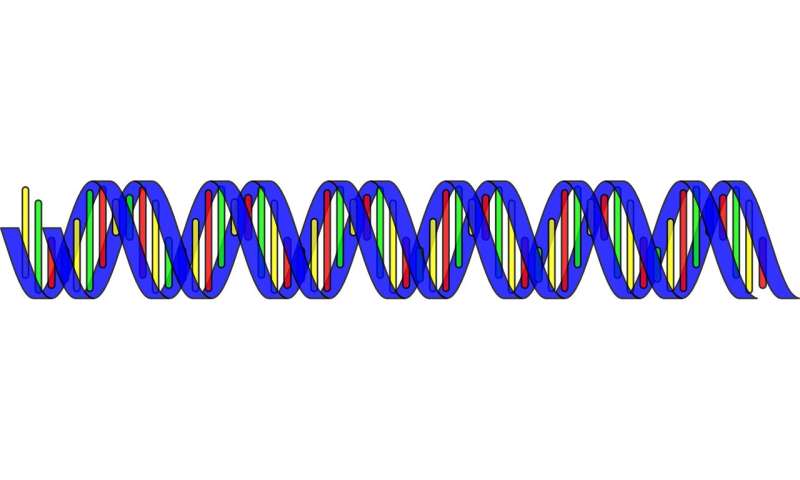
An Ontario-led research group has discovered a novel cancer-driving mutation in the vast non-coding regions of the human cancer genome, also known as the “dark matter” of human cancer DNA.
The mutation, as described in two related studies published in Nature on October 9, 2019, represents a new potential therapeutic target for several types of cancer including brain, liver and blood cancer. This target could be used to develop novel treatments for patients with these difficult-to-treat diseases.
“Non-coding DNA, which makes up 98 per cent of the genome, is notoriously difficult to study and is often overlooked since it does not code for proteins,” says Dr. Lincoln Stein, co-lead of the studies and Head of Adaptive Oncology at the Ontario Institute for Cancer Research (OICR). “By carefully analyzing these regions, we have discovered a change in one letter of the DNA code that can drive multiple types of cancer. In turn, we’ve found a new cancer mechanism that we can target to tackle the disease.”
The research group discovered that the mutation, termed the U1-snRNA mutation, could disrupt normal RNA splicing and thereby alter the transcription of cancer-driving genes. These molecular mechanisms represent new ways to treat cancers carrying the mutation. One of the potential treatment approaches includes repurposing existing drugs, which, by bypassing early drug development stages, could be brought into the clinic at an accelerated rate.
“Our unexpected discovery uncovered an entirely new way to target these cancers that are tremendously difficult to treat and have high mortality rates,” says Dr. Michael Taylor, Paediatric Neurosurgeon, Senior Scientist in Developmental and Stem Cell Biology and Garron Family Chair in Childhood Cancer Research at The Hospital for Sick Children (SickKids) and co-lead of the studies. “We’ve found that with one ‘typo’ in the DNA code, the resultant cancers have hundreds of mutant proteins that we might be able to target using currently available immunotherapies.”
The U1-snRNA mutation was found in patient tumours with certain subtypes of brain cancer, including nearly all of the studied samples from adult patients with sonic hedgehog medulloblastoma. The mutation was also found in samples of chronic lymphocytic leukemia (CLL) – the most common type of adult leukemia—and hepatocellular carcinoma—the most common type of liver cancer.
Source: Read Full Article
